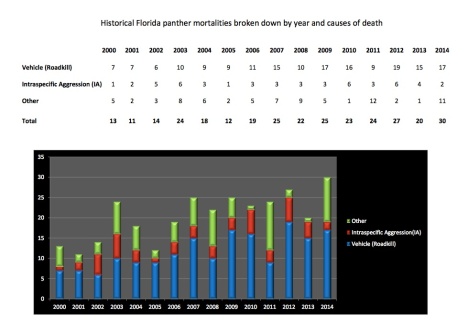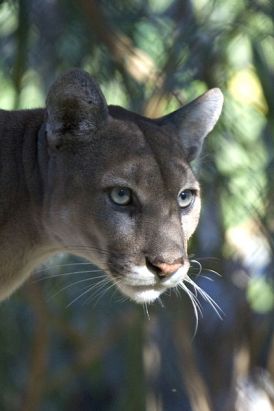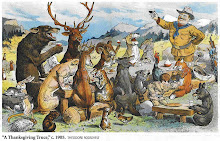CMR refuge mountain lion study yields surprises
BILLINGS – It is tough being a cougar in the Missouri Breaks.
That’s evidenced by the old female mountain lion captured last winter during a lion study.
“She was missing part of her tail, two toes on her hind foot, and her ears were also missing, probably froze off,” wrote Doug Powell, a U.S. Fish and Wildlife Service field biologist, in an email.
“She was definitely the oldest female I had seen in a long time,” he said. “We had one in the Garnet Range that was 13. They live a rough life.”
Unfortunately, the lion’s neck was so thick that she shed the collar within a week.
“Her neck was bigger than her head,” Powell said.
Powell is one of the biologists studying lions on a portion of the 1.1 million-acre Charles M. Russell National Wildlife Refuge in north-central Montana. Beginning in the winter of 2010 and continuing through last winter, 15 lions were captured and collared for the study on the north side of the Missouri River, west from U.L. Bend to Antelope Creek.
“So it’s a small sample area,” Powell said.
Because the sample size is small, Powell said it’s impossible to estimate the number of mountain lions in the refuge.
“We’re just trying to get an idea about what kind of habitat they use and the food sources they’re using,” Powell said.
Genetic testing will also be done on hair samples collected to try and find out more about the relationships between the refuge’s lions.
With the last of the collars scheduled to drop off in July, it will be a while before the study’s data is collated and analyzed, but already the researchers have had some of their original hypotheses blown up and have gained a deeper understanding of the big cats.
Perhaps the biggest surprise was the amount of dispersal from the Missouri Breaks and its rugged pine and prairie uplands and cottonwood river bottom. There is no hunting on the refuge, yet three males were killed legally.
“It seems like they didn’t last long once they got off the refuge,” Powell said.
He noted that few males live past 3 years old in hunted populations. Females are more likely to be spared to continue to reproduce.
One of the lions was killed by a hunter in southwest North Dakota, where it had decided to relocate. Another male also hiked the more than 700-mile cross-country route to North Dakota.
“That was a bit of a surprise,” said Randy Matchett, CMR biologist. “We expected some movement, but not that much.”
The study also revealed other ways that the lions died, some of them unusual. One female lion was snared within days of leaving the refuge and another was found dead after trying to swim across the Dry Arm of Fort Peck Reservoir.
“We’re speculating it drowned but we don’t know what killed it,” Powell said. “There was a big wind event about that time. It’s quite possible it was swimming across and drowned in the high waves.”
Another female disappeared south of Fort Peck Reservoir in the Jordan area, possibly after losing its collar.
“She could have kept going to North Dakota, too,” Matchett said.
Another collared lion killed a cow elk that was collared for a Montana Fish, Wildlife and Parks study, a pretty unusual occurrence.
The biologists had initially thought that the lions would be more likely to disperse to nearby mountain ranges, like the Little Rocky or Bears Paw ranges to the north and northwest.
“I didn’t think they’d be eastbound like they were,” Powell said. “That was probably the biggest surprise.”


















